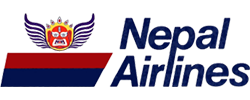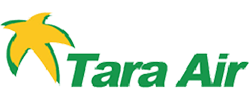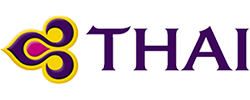Nepalese Nature and Geography
Though Nepal occupies only 0.01% of the total earth landmass, it is extremely varied in geography with altitude varying from 60 to 8848 meter within a breadth of just 150meter! It is home to some of the rare animals and plants in the world including Royal Bengal Tiger, Rhinocerous, Gharial Crocodile, Wild Asian Elephant, Red Panda etc. Two of Nepal's natural reserves are considered to be the world's biodiversity hotspots. Nepal comes only second to Brazil in water resources and probably has the longest chain of Himalayas not to mention 8 of the world's top ten Himalayas including Mt. Everest (8,848 meter above sea level).
Following are some interesting facts about Nepal:
- Nepal has 2% of all flowering plants in the world,
- 8% of the world's population of birds (more than 848 species),
- 11 of the world's 15 families of butterflies (more than 500 species),
- 600 indigenous plant families,
- 319 species of exotic orchids.
Nepalese Civilization and Culture
Nepal is considered to be at the crossroad of Asian Civilizations; for centuries Nepal was a transit point for trades that took place across the central and south Asia and as a result thrived as an important economic and social center.
Nepalese civilization is as old as human struggle. Epics like Mahabharata and Ramayana speak of the glories and sanctity of the Himalayas, often known as the abode of god. Nepal is still revered as the land of Sita, wife of Lord Rama and daughter of the king of Janak who reigned in now what is called Janakpur in south-east Nepal. Another event of historical significance in Nepal's annals was the birth of Lord Buddha around 500 BC which took place in Lumbini at south-west Nepal.
The ancient Nepal (100 - 1000 AD) is blurred in historical records. During that period Nepal was divided into many small kingdoms and principalities and ruled by different dynasties. According to historians, the early dynasties that ruled Kathmandu were Kirata, Gopala (cow herders) and Licchavi in that order. However the oldest and the first ever written historical document is a stone inscription that has been discovered in Changu Narayan Temple in the northern rim of Kathmandu Valley. The temple is believed to have been built by one Licchavi King Manadeva and dates back to 408 AD. This also suggests that Kathmandu was an important hub of civilization even back then. Licchhavi period is referred to as golden period in the history of art and architecture. This was followed by Malla dynasties who were divided into different principalities. It was during this era that Kathmandu Valley prospered and flourished to become a center of art and trade. The valley was divided into three kingdoms namely, Kantipur, Lalitpur and Bhaktapur. The Malla dynasty started from around 1200 AD till 1769 when Shah dynasty originating from Gorkha district defeated Kathmandu kings to capture the throne. King Prithivi Narayan Shah is regarded as the father and unifier of kingdom of Nepal. The modern history of Nepal begins from 1769 till date.
Within this checkered history, many ethnic groups of Nepal has survived the legacy of victory and loss and continue to preserve their ancient culture and tradition. Today it proudly boasts of a country of diverse cultures, customs, religions, festivals and tribes. It is home to over 100 ethnic groups who spoke over 70 distinct and unique languages. Newars, Tamangs, Thakuris, Bahuns, Chhetris, Gurungs, Tharus, Madhesis, Chepangs, Sherpas, are few of the prominent ethnic people of Nepal
Nepal at a Glance
Area : 147,181 sq. km
Geography : Situated between China in the north and India in the south, east and west
Capital : Kathmandu
Population : 27 million
Language : Nepali is the national language however English is understandable and widely spoken
Currency : Nepalese Rupee
72.00 NRs. = US$ 1.00 (approximately)
95.00 NRs. = Euro 1.00 (approximately)
Political System : Republic Federal Democratic
Religion : Hinduism, Buddhism, Kirat, Islam, Christian, Animism etc
Climate : Four Season viz.
Winter - December to February
Spring - March to May
Summer - June to August
Autumn - September to November
People : more than 100 ethnic groups
more than 70 ethnic dialects
Time : Nepal is 5 hrs 45 minutes ahead of GMT
Electricity : Electricity is only found in major towns with 220 volts/ 50 cycles
Banks : Banks are open between 09:00 A.M. to 3:00 P.M., Monday to Friday
Official Weekly Holiday: Saturday is official weekly holidays in Nepal. Most of the shops are remains open from Sunday through to Friday, while Museum throughout the valley remains closed on Tuesday and other Government holidays.
What to wear?
Light weight clothing is recommended for May through October. Warm garment are required in October to March. An umbrella or a raincoat is a must for the rainy season (Mid June –Mid September).
Business Hours
Most government offices in Kathmandu are open from 10:00 am - 5:00 pm in summer except close in 3:00 pm on Friday and 10:00 am – 4:00 pm in winter except closed by 2:00 pm on Friday.
Access to Nepal
By Air
Nepal Airlines Corporation is the national flag carrier of Nepal with flights to /from major cities in the world including Delhi, Dubai, Kualalampur, Hong Kong, Osaka, and Shanghai.
Other international airlines
- Biman Bangladesh Airlines (to/from Dhaka)
- China South-West airlines (to/from Lhasa)
- Druk Air (to/from Paro)
- Dragon Air (Hongkok)
- Ethiad Air
- Gulf Air (to/ from Abu Dhabi)
- Indian Airlines (to/from Delhi, Calcutta, Varanasi)
- Orient Thai (Bangkok)
- Qatar Airways (to/from Doha)
- Silk Air (Singpore)
- Thai International (Bangkok)
By Land
Nepal can be accessed overland through six entry points namely, Kakarbhitta, Birgunj, Belhiya, Bhairahawa, Nepalgunj, Dhangadi and Mahendra Nagar in the Nepal-India border and one Kodari in the Nepal-China border. All tourists must possess an international passport while entering the country.
Foreign Exchange
Foreign currencies must be exchanged only through the banks or authorized exchange dealers and the receipts from such transactions must be obtained and retained. Indian currencies of Rs. 500.00 and Rs. 1,000.00 note are not allowed to be used in Nepal and will not be exchanged or will not be accepted for transaction of any kind. Most of the transactions are carried out in the US dollar standards.
Custom Formalities
Tourists are required to claim and clear their baggage especially in the custom on arrivals while entering Nepal. Dutiable goods such as tobacco and liquors, within the prescribed quantity from duty free shop, are permitted. Carrying narcotics, arms and ammunition are strictly prohibited. Provided that tourists show VAT receipts, one can get the VAT sum from the airport custom while leaving Nepal.
The exports of antiques require the certificated from the Department of Archaeology, National Archive Building, Ram Shah Path, Kathmandu.
Airport Tax
Domestic Departure (within Nepal)
Any airport Rs. 175.00
Visa Fee
National of SAARC countries (viz. India, Bhutan, Bangladesh, Maldives, Sri Lanka, & Pakistan) and China do not need visa to visit Nepal. As per the rules Indian citizens do not need visa, however, effective from October 2000, Indians nationals traveling to Nepal by air have to show a valid photo identity like a passport, voter's identity or an identity card issued by the Indian government upon arrival at entry point. Temporary identity card with photographs issued by Nepal-based Indian diplomatic missions is also considered in case of exception. Children under 10 years need not to show any identification.
A three-day transit visa is available at the Tribhuvan International Airport free of cost. However visa must be obtained if its more than three days. Free visa is to be given to tourists for re-entry to Nepal provided they stay at least for 15 days in the country in that visa year.
No. of Entry
Entry Fees
Single entry
US$ 30.00 for 60 days
Multiple entry
US $ 50.00 plus US $ 30.00 for single entry or equivalent convertible foreign or Nepali currency.
Visa extension fee
US $ 30.00 for 30 days or equivalent convertible foreign or Nepali currency.
Re-entry visa fee
US $ 30.00 for 30 days or equivalent convertible foreign or Nepali currency.









